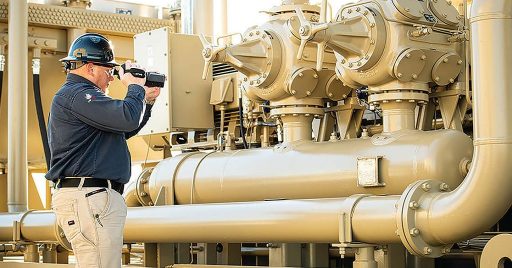Modern oil refineries operate like steel-plated cities, each valve depending on the next to keep crude flowing and profits steady. Yet the scale that makes them efficient also hides weak spots: cracks, fouled catalysts, lurking software bugs. Routine maintenance is the discipline that holds everything together, keeping hazards in check, optimizing yield, and preserving the trust of regulators and nearby communities.
Hidden Stress Points in Refinery Equipment
Every pressure vessel records heat, vibration, and chemical stress. Months of nonstop throughput harden gaskets, flex weld seams, and seed micro-pitting on pump shafts. Without scheduled inspections—ultrasonic testing, infrared scans, lubricant checks—those whispers of wear can trigger a six-figure shutdown.
Preventive routines catch anomalies early, letting engineers swap an $8 seal instead of a $250 000 compressor. The payoff is not just cost avoidance but the freedom to choose when to halt a unit.
Safety First, Production Second
Worker safety shares the same timeline as maintenance; neglect one and you imperil the other. Corroded pipe walls do not announce their thinning until a jet-fire erupts, and jammed relief valves ignore control-room alarms at the worst moment.
Routine walk-downs, gas-detector calibrations, and pressure-relief tests create layered defenses that data back up: refineries with disciplined schedules log far fewer Tier-1 process-safety events. Fewer incidents mean lower insurance, less lost-time injury, and a crew that feels protected rather than expendable.
Economic Payoffs You Can Measure
Profit margins in downstream operations are razor-thin, so availability is king. A catalytic cracker offline for one day can erase an entire week of margin. Predictive analytics built on vibration probes, motor-current signatures, and cloud-fed historian data let planners schedule pit stops with Formula One precision.
Instead of running equipment to failure, teams align maintenance windows with crude-slate changes or product-tank turnovers, shaving hidden costs like energy inefficiencies and off-spec reprocessing. Over a fiscal year, those incremental gains compound into millions in EBITDA.
Building a Culture of Proactive Care
Culture is the glue that makes checklists more than paper. When operators, planners, and procurement specialists share accountability, preventive tasks stop feeling like interruptions and start acting as a rhythm. Toolbox talks that highlight yesterday’s near-miss, digital dashboards that visualize mean-time-between-failure, and cross-training apprentices in vibration analysis all feed a sense of shared mission.
Many refineries now fold supplier partnerships into that loop, leveraging MRO integrated supply solutions to keep critical spares on site without ballooning inventory. The cumulative effect is a plant where people expect equipment to be ready, because they make it ready together.
Conclusion
Routine maintenance is not a cost center; it is the refinery’s immune system, silently scanning for threats and healing tiny wounds before infection sets in. By detecting stress points, safeguarding crews, boosting financial performance, and nurturing a collaborative mindset, it turns a fragile network of machinery into a resilient production ecosystem.
In an era of tight margins and unforgiving regulatory oversight, the cheapest barrel refined will always be the one you never lost to downtime.


